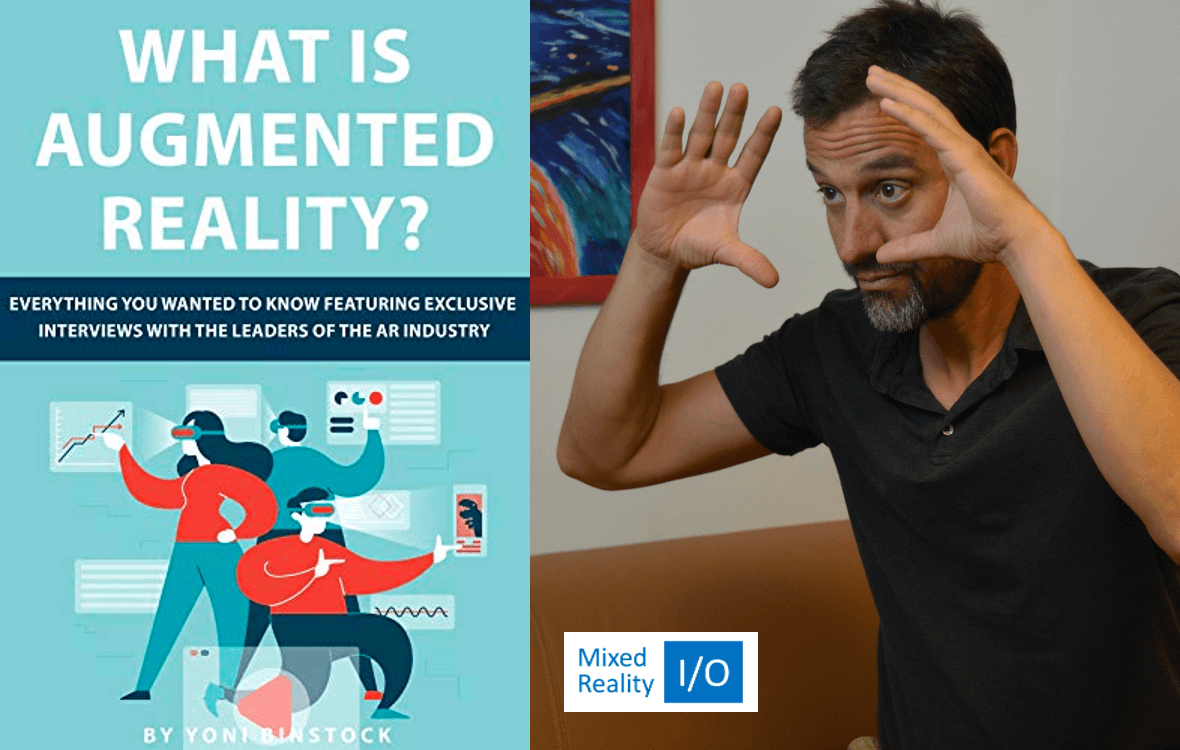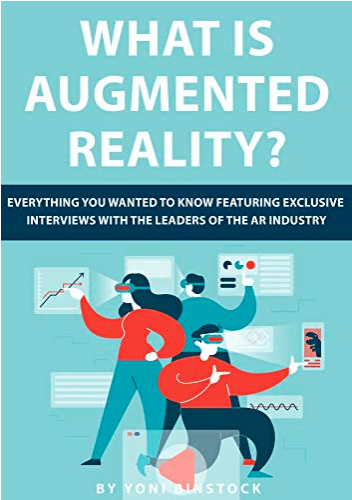
The following interview was conducted with Andy Gstoll, CEO of Mixed Reality I/O by Yoni Binstock, author of “What is Augmented Reality? Everything You Wanted to Know Featuring Exclusive Interviews With the Leaders of the AR Industry“ on May 13, 2020.
What excites you the most about augmented reality?
Augmented and mixed realities will increasingly become “our” reality. They will contain both real and virtual elements to define the state of things as they exist. Most things around us that we find interesting or see value in don’t need to be tactile, and therefore they don’t need to be physical. Virtual content on top of the real world may actually be able to prevent us from building unnecessary physical things that conflict with nature. I love nature and I love the real outdoors, which is why I get really excited about the opportunities of AR to create a more ecologically friendly physical world while going as crazy, informative, and entertaining as we want with virtual layers on top of it.
What do you recommend for people who want to get into the AR field?
Don’t fall into the gimmick trap. We have seen many ups and downs in the AR industry over the last decade and the reason for this has often been the overselling of the promise of AR and not being able to deliver according to expectations. AR almost certainly creates a “wow effect” on people who are first getting into it. AR has tremendous potential, probably more than we can imagine. However, as proven over many years in the past, things usually take longer than expected, especially when it comes to hardware development, and this is particularly true for AR glasses. There are still many technical challenges to be solved before we as consumers will be able to wear the magic of AR on our faces. If you are new to AR, pause for a moment after you went through the “wow effect” and try to figure out what it is exactly you would like to achieve with it. Think about the value you are providing through the AR experience you’d like to offer. Then start contacting and networking with people who have been in the space for a while and ask for their advice to prevent expensive pitfalls of your own. AR is here to stay, so “getting into it” now will benefit you on many different levels and prepare you for what’s to come. If you are really serious about it, join the AR community and help us shape the future of AR.
What are your predictions for the AR industry and technology in the next 2, 10, and 25 years?
Mobile AR has been around for more than 10 years, even before the iPhone was first introduced. The reason why AR has not really reached mass consumer adoption is because we are still lacking the perfect hardware to consume it. Smartphones are awesome and very capable of delivering AR experiences; however, the level of immersiveness, also known as the feeling of presence, is limited by looking through a device about the size of your hand only. My predictions in terms of devices go something like this: in 2 years, we are likely to see at least one of the large technology providers like Apple, Google or Facebook/Oculus introduce accessory AR glasses to consumers. When I say “accessory,” I mean a fashionable pair of glasses extending functionality to the smartphone experience, very much like smartwatches and earbuds are connected to smartphones today. These AR glasses are unlikely to enable fully immersive experiences, but will rather provide some very selective services like notifications, navigation, and maybe even some entertainment bits, like the ability to watch videos on a virtual screen in front of you without having to look down onto your phone. In 10 years, we are likely to have achieved the next big leap in AR glasses development, which will in fact enable immersive experiences. The glasses will be able to show virtual content across almost your entire field of view. This will completely differentiate AR glasses from the limited augmented area we can consume today on our smartphone displays. In 25 years, AR glasses will probably be in a similar situation as smartphones are now. They will have had their prime time and will likely be replaced by the next paradigm shift. There is a high probability that AR will be provided through contact lenses for many of us then, and for the most daring of us, it will be enabled through brain-machine interfaces (BMIs) stimulating our visual and other senses directly in our brains.
What do you think will be the positive and negative consequences of living in an augmented reality future?
I think there is very little danger for negative consequences as long as AR will remain optional; it needs an off switch. Having the ability to put virtual content on top of real things and our surroundings at will should always prove beneficial. So, AR in itself does not imply any negatives. There are, however, a couple of important topics we need to consider carefully as we grow the industry in the next few years and decades. Privacy and security are important, not only for AR or VR, but for any new technologies that we use in our lives. Our smartphones already know us very well from the apps we use and the websites we visit in the virtual world. AR glasses have the potential to understand what we are looking at with most of our interest in the real world. Just like we have done for desktop computers and mobile devices in the past, we need to safeguard any future category of devices and services with utmost scrutiny.
If there’s anything else you’d like to share with my readers about the future of AR, what would you like to say?
I have been in the AR industry for more than a dozen years now and there is not a single day that goes by without me being fascinated by it. As mentioned above, I love our “real reality”, nature and everything planet earth has to offer. I, therefore, invite you to join me and many of my AR colleagues to help shape an AR future for the better. I frequently write about various AR topics, and I am always open to discussing challenges and opportunities in spatial computing with you. To stay in touch or to get in touch, please subscribe to my newsletter, which not only provides you with valuable updates on “everything mixed reality”, but will also give you access to my tutorials and videos.
Download Yoni’s entire book for your Amazon Kindle: “What is Augmented Reality? Everything You Wanted to Know Featuring Exclusive Interviews With the Leaders of the AR Industry“

